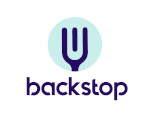Why we're building Backstop
Layer 1 chains like Ethereum are secured by the ability, as a last resort, to fork the chain. Ethereum would use this if a majority of stakers started censoring transactions.
The ability to do this acts as a deterrent which means we don't have to actually use it. There's no point in trying to subvert a ledger only for everyone to ignore your subversion.
Vitalik Buterin calls this property "Subjectivocracy".
Applications built on top of Layer 1 do not have this property. Ethereum won't fork for you.
Without it, all kinds of problems become impossible to solve securely. You cannot build secure oracles, or effectively govern DAOs, or robust contract upgrade mechanisms.
In practice many projects end up relying on multisigs. Alternatively teams put their contracts under the control of tokenholders, but keep back a large enough proportion of the tokens that they have de facto control.
Sometimes people use genuinely decentralized token governance, but that means they cannot secure more than half their token value. Maker has this problem, this is why they are now considering moving to their own chain.

Our solution is to make a chain, an L2 on top of Ethereum, where your application can cause the underlying chain to fork.
This would be chaos if it happened all the time, but it works as just a backstop, with a well-defined escalation process based on reality.eth. The ability to fork secures applications, even if it is triggered rarely or never.
Backstop is EVM-equivalent, so contracts can easily be redeployed on it, with some minimal changes to use the chain's enshrined dispute resolution.
By deploying on Backstop, we can build real cryptoeconomically robust systems and stop faking it with multisigs and plutocratic token distributions.
Read more in the whitepaper.
